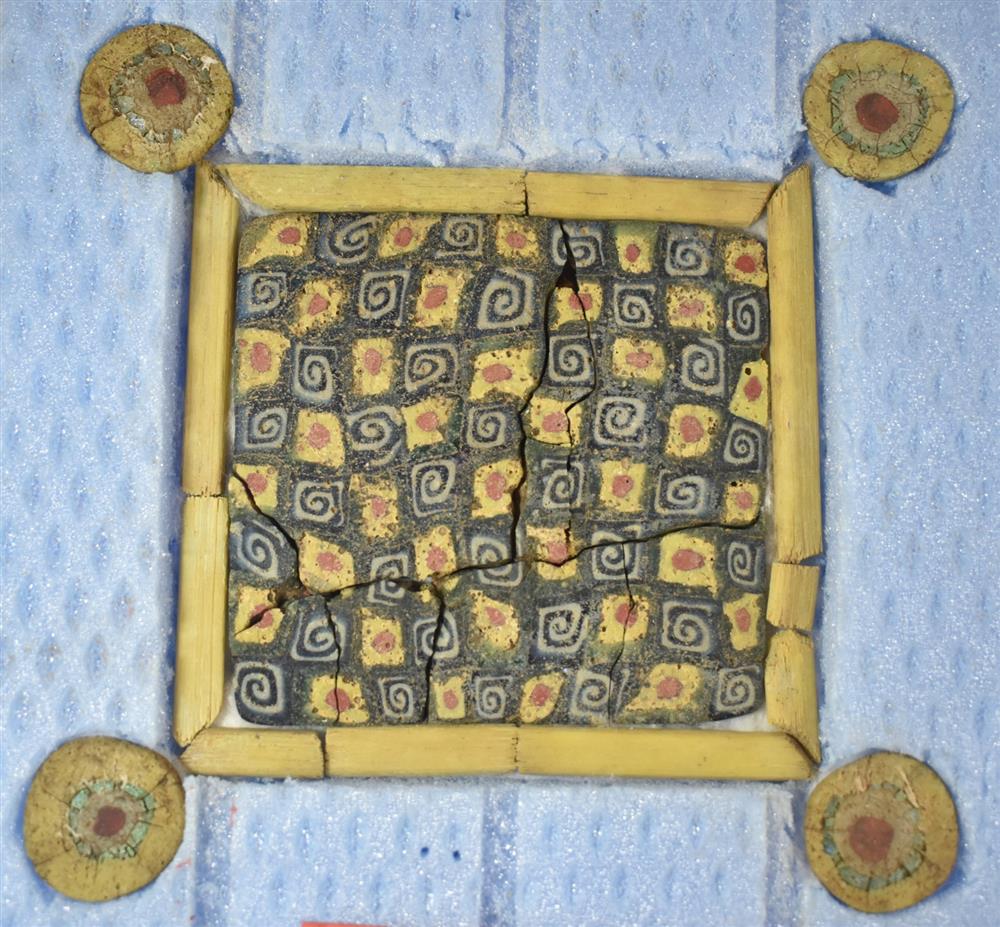
The first Millefiori glass panels ever unearthed in Turkey have turned up during excavations at the ancient Lycian city of Myra’s former Andriake port, in present day Demre, Antalya. The country’s Ministry of Culture said the stunning discovery might just be Turkey’s most important archaeological find of the year.
Experts have been digging at Myra and its silted-up port on Turkey’s southern coast since 2009. Late last year, however, the country’s Culture and Tourism Minister Mehmet Nuri Ersoy announced the “Heritage to the Future” project, which dictates that domestic archaeologists must handle all excavations within Turkey’s bounds. Now, that same project is paying for the local Akdeniz University to explore Myra—one of the largest cities of the Lycian League, a union of independent city states that existed from 168 B.C.E. through 43 C.E.
Location 42. Courtesy of Turkey’s Ministry of Culture and Tourism.
Under the leadership of Professor Nevzat Cevik, the Turkish team excavating Myra and the Andriake port settlement spent weeks meticulously unearthing many hundreds of Millefiori panels, each measuring roughly 10 square centimeters, from beneath Structure 42, “in the Customs Area on the port side of Andriake Agora,” they explained in a statement.
Millefiori vessels have surfaced in Turkey before, but tessellated sheets like these are a first. Experts believe the newfound fragments date to the 5th century C.E..
Ancient Egyptians invented the Millefiori technique during the 2nd century B.C.E., but the craft faded away in the 8th century C.E.. Venetian glassmakers revived it 700 years later, reinforcing the form’s Italian name, which translates to “thousand flowers.” Today, Millefiori glass is associated with the famed glass-producing island of Murano. It’s made by creating multicolored glass rods now known as murrine, then heating, stretching, and cooling them to be cut into beads or disks, thus revealing the dazzling patterns of their cross sections.
One of the Millefiori glass panels being excavated. Courtesy of Turkey’s Ministry of Culture and Tourism.
As such, Millefiori glass is a precious, labor-intensive material typically reserved for highly important sites. The sheets discovered at Andriake port retain much of their former glory centuries on, still radiating striking red, yellow, and blue hues, as well as patterns incorporating both flowers and spirals. The discovery of such sheets beneath the Customs Area encompassing Structure 42 indicates that this site, situated amongst the most prominent part of the port, was probably its particularly splendid administrative building.
Another Millefiori panel. Courtesy of Turkey’s Ministry of Culture and Tourism.
In addition to the many Millefiori wall decorations, archaeologists found complementary glass rosettes that most likely also adorned the administrative building’s walls, alongside mosaics featuring birds, camels, and saints—the first sighting of such figures on any Turkish artifact—all rendered in the Roman opus sectile technique.
According to Türkiye Today, Professor Cevik considers these treasures “a gift to Turkish archaeology, celebrating the 15th year of our excavations.” The relics are now on display at the Lycian Civilizations Museum, located about 20 yards away from where they were found. Experts are still piecing outstanding Millefiori fragments together into their original designs. Excavations will continue, too.